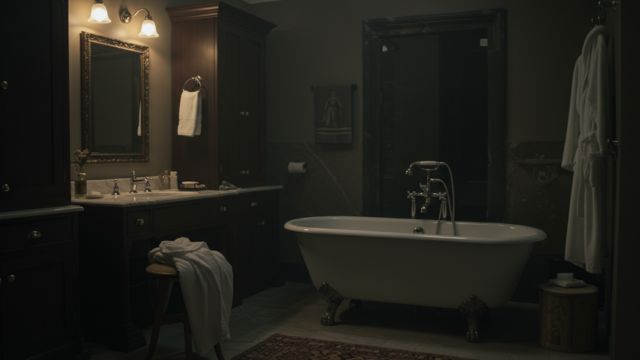Secret photography, often referred to as covert or hidden photography, involves capturing images or videos of people without their knowledge or consent. This practice can range from taking candid street photos to using hidden cameras to record individuals in private or sensitive settings. The term 偷拍, a Chinese word meaning “to secretly photograph,” is commonly associated with this practice, especially in contexts where privacy concerns are heightened.
Understanding Secret Photography
At its core, secret photography is about discretion and anonymity. Photographers use various techniques and devices—such as concealed cameras, disguised lenses, or smartphones cleverly hidden in everyday objects—to take photos without alerting their subjects. The motivations behind secret photography are diverse. Some photographers aim to capture authentic moments in public spaces where people behave naturally, unaware of being observed. Others may use it for investigative journalism, documenting wrongdoing or exposing social issues that might otherwise remain hidden.
However, secret photography blurs the lines between legitimate observation and intrusion. When photos are taken in private settings or without consent, the ethical and legal boundaries become murky. This is where the controversy around secret photography begins.
The Role of 偷拍 in Secret Photography
The practice of 偷拍 has become particularly notable in East Asia, where it has sparked significant social debate. In Chinese-speaking communities, 偷拍 is often linked to illegal or unethical behavior—such as secretly taking photos in places like fitting rooms, public restrooms, or schools, where people expect privacy. These actions can cause psychological harm and invade personal privacy, leading to distress and a loss of trust in public spaces.
In some regions, the term 偷拍 has become synonymous with voyeurism or harassment, especially when images are shared online without the subject’s knowledge. This has led to stricter laws and increased awareness campaigns aimed at protecting individuals from such invasions.
Legal Perspectives on Secret Photography
Laws governing secret photography vary widely across countries, reflecting cultural differences in privacy expectations and freedom of expression. In many Western countries, photography in public spaces is generally legal, even without consent, because there is a lower expectation of privacy outdoors. However, secretly photographing someone in a private space—such as their home, a restroom, or changing room—is illegal and can result in criminal charges.
The legal challenges often lie in defining what constitutes a “reasonable expectation of privacy.” For example, taking a photo on a public street is usually acceptable, but snapping a picture through someone’s window or inside their private office is not. Many jurisdictions have enacted specific anti-偷拍 laws to address these concerns, criminalizing hidden camera use in private places.
Ethical Dilemmas Surrounding Secret Photography
Beyond legal issues, secret photography raises serious ethical questions. Respect for privacy is a fundamental human right, and secretly capturing someone’s image without consent can violate this principle. Even if the subject is in a public space, many argue that they should have control over how their image is used or disseminated.
Photographers who engage in secret photography must consider the potential harm their work might cause. While candid photos can reveal important social truths or capture spontaneous beauty, they can also exploit individuals, especially vulnerable groups like children or marginalized communities. The balance between artistic freedom, journalistic necessity, and respect for privacy is delicate and often contentious.
The Impact of Technology on Secret Photography
Advances in technology have significantly changed the landscape of secret photography. Small, affordable, and high-quality cameras embedded in everyday items—such as pens, glasses, or buttons—make it easier than ever to take photos without detection. Smartphones with silent camera modes and instant sharing capabilities further complicate the issue, enabling the rapid spread of images taken without consent.
Social media platforms sometimes become unwitting accomplices in the controversy, as images captured secretly can be uploaded and shared widely, often without proper context or the subject’s approval. This amplifies the potential for harm, harassment, and even blackmail.
Public Awareness and Preventive Measures
In response to growing concerns about secret photography and 偷拍, many countries and organizations have increased efforts to educate the public about privacy rights and online safety. Awareness campaigns teach people how to recognize and report illegal photography, while institutions implement stricter security measures in vulnerable areas.
Public facilities often place signs warning against unauthorized photography, and some venues employ surveillance to deter secret filming. On the technological front, apps and devices have been developed to detect hidden cameras or alert individuals to unusual recording activity nearby.
The Fine Line Between Art and Intrusion
Secret photography also exists in a complex space within the arts. Street photographers, for example, aim to capture unposed moments that tell a story about urban life, culture, or social issues. Their work often involves photographing strangers without explicit permission. While many view this as an important form of expression and documentation, others see it as an invasion of personal space.
The controversy intensifies when these images are published commercially or online. Subjects may feel exposed or exploited, leading to public backlash against photographers or institutions that display such work without consent. Some photographers choose to blur faces or obtain retrospective permission to mitigate ethical concerns.
Conclusion: Navigating the Controversy
Secret photography and the practice of 偷拍 highlight the ongoing tension between the right to privacy and the desire for transparency, art, and information. While the ability to capture candid moments can provide valuable insights and preserve genuine human experiences, it also poses significant risks to personal dignity and security.
As technology continues to advance, society must find ways to regulate secret photography carefully, balancing the rights of individuals with the freedoms of expression and journalism. Public education, clear laws, and ethical guidelines are essential to ensure that secret photography does not become a tool for exploitation or harm.
Ultimately, respecting individuals’ privacy and consent should remain at the heart of any discussion about secret photography, ensuring that this powerful tool is used responsibly and with empathy.



